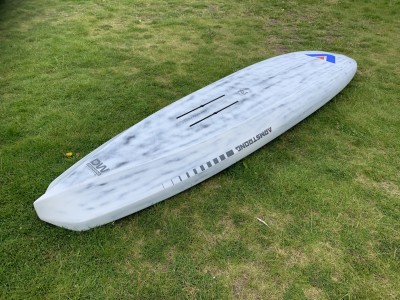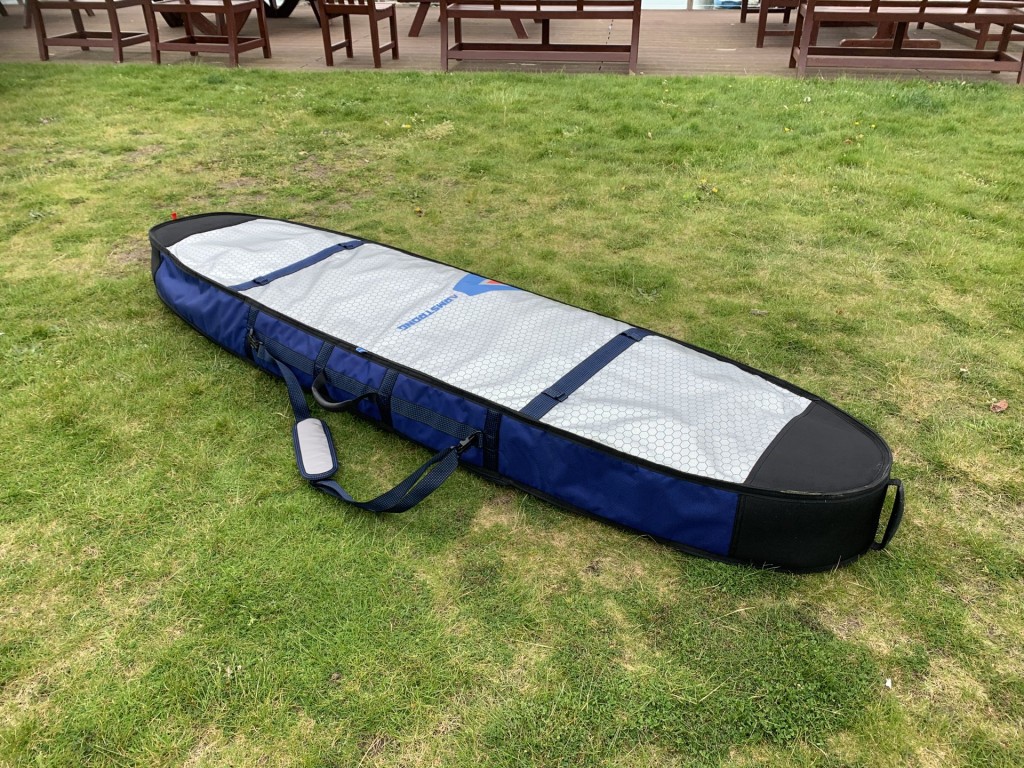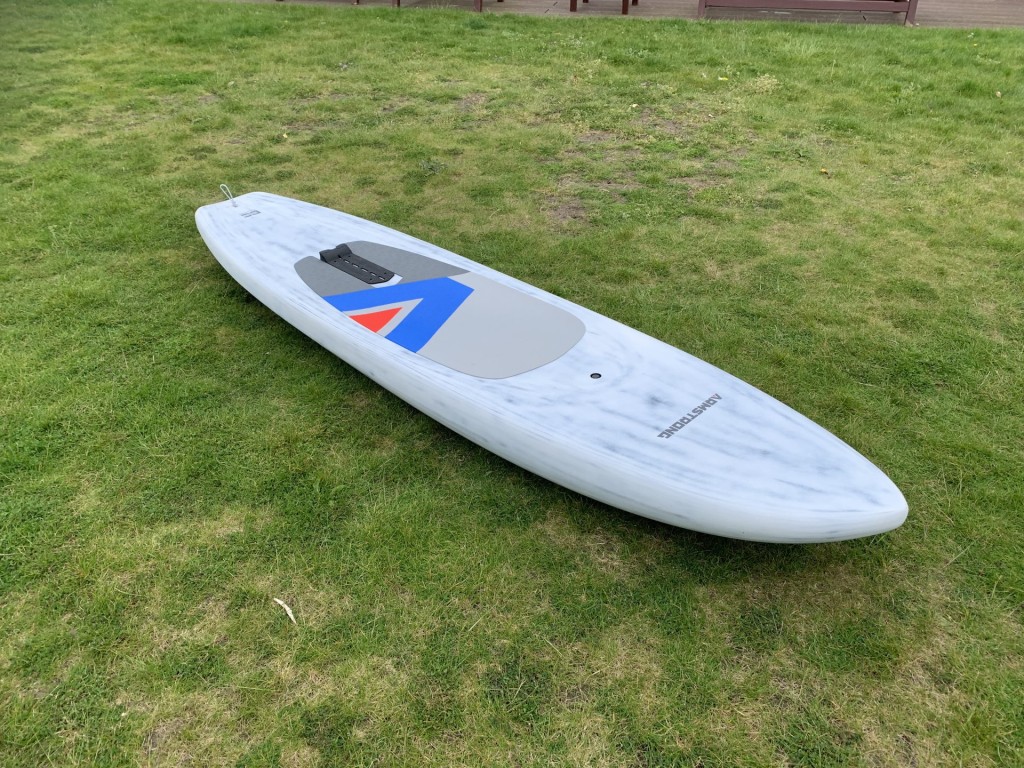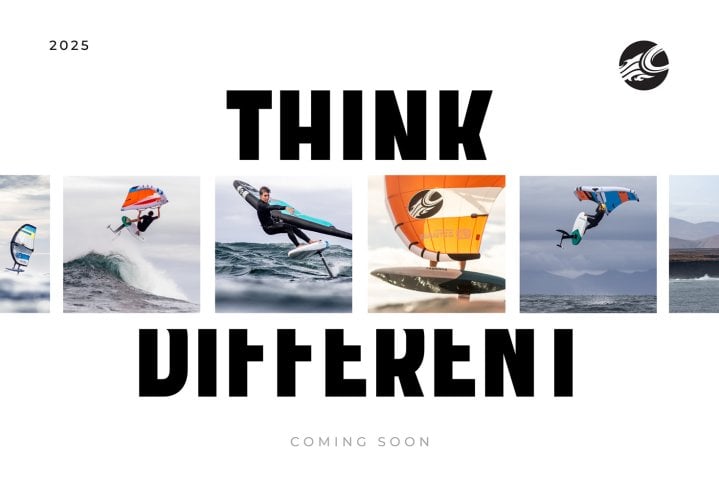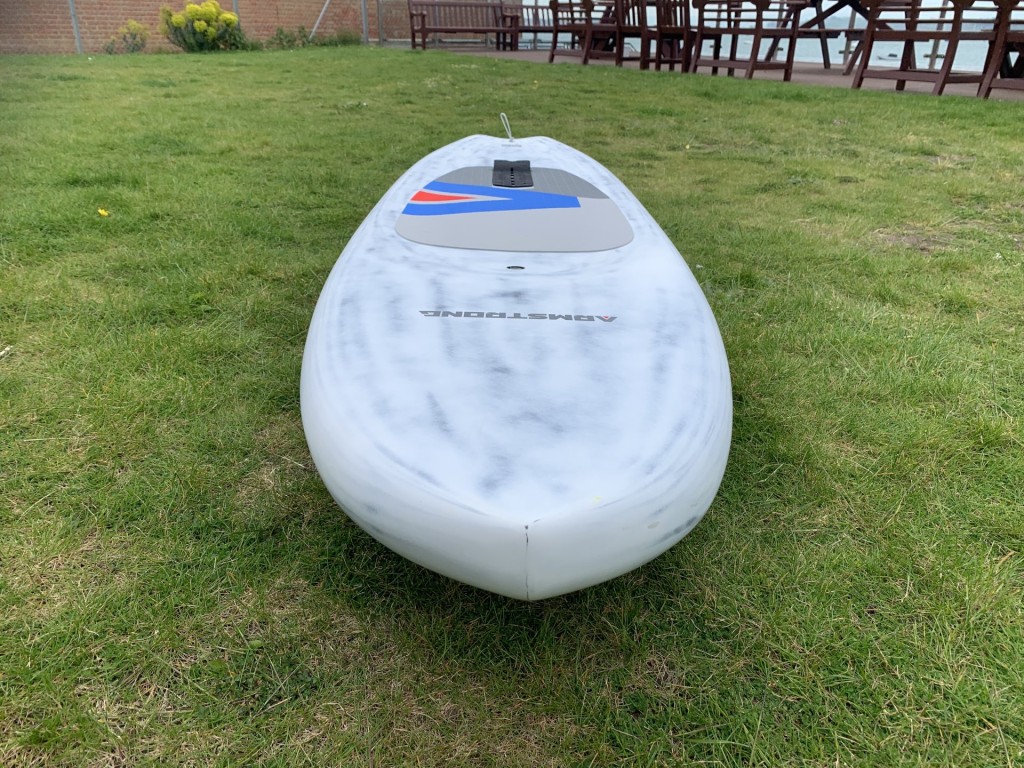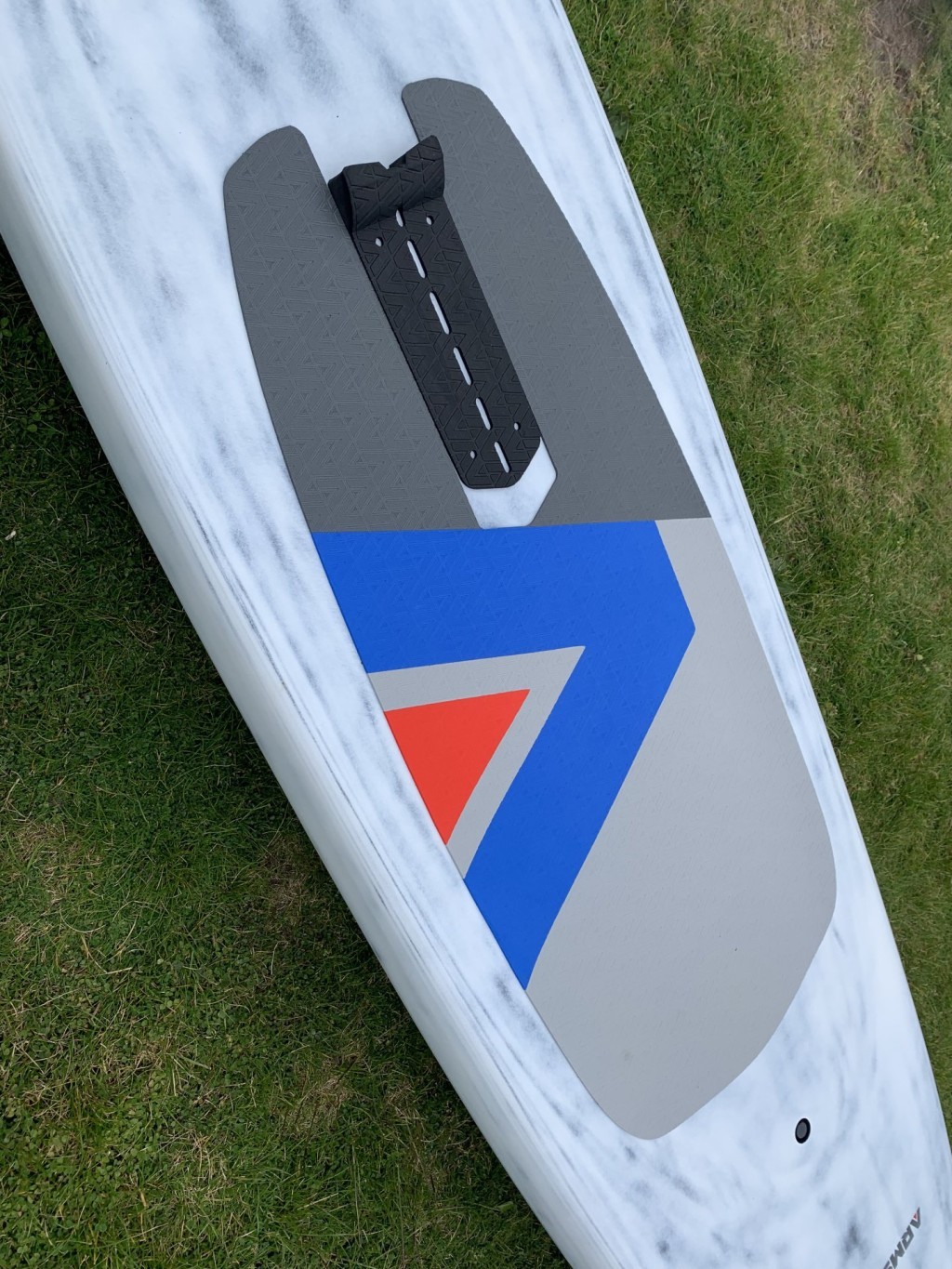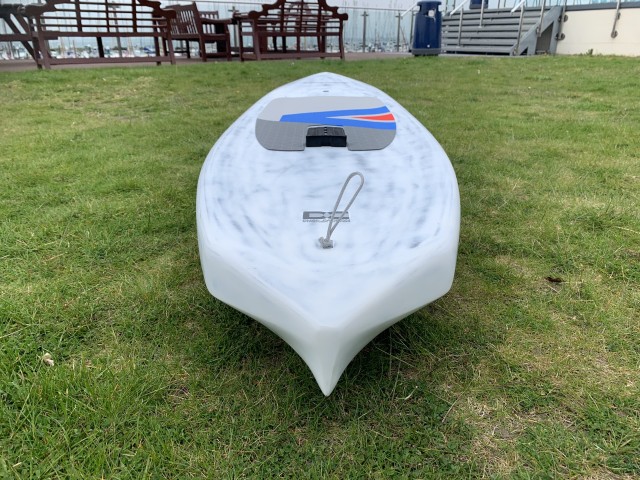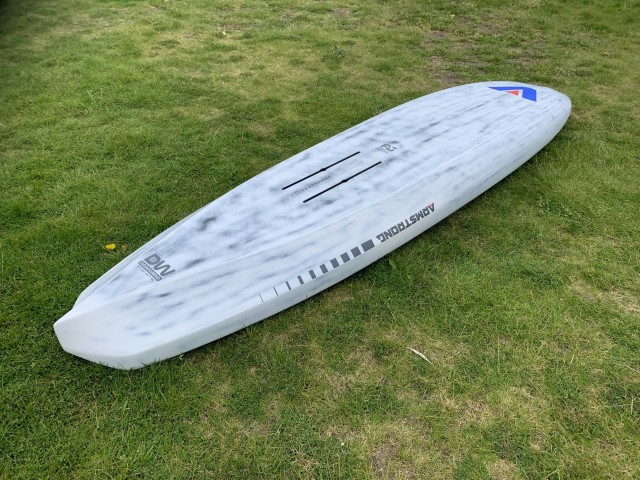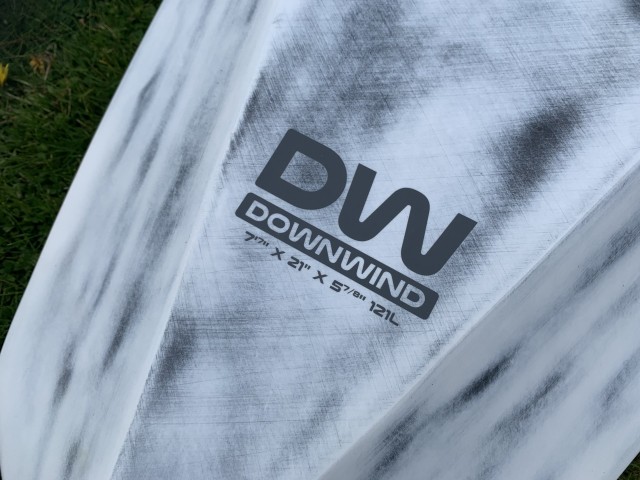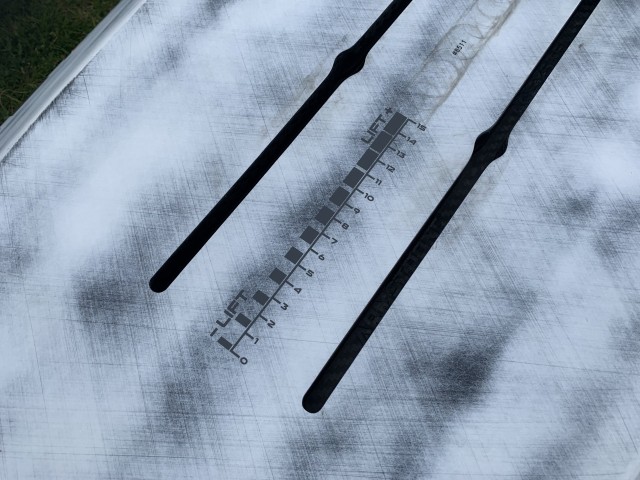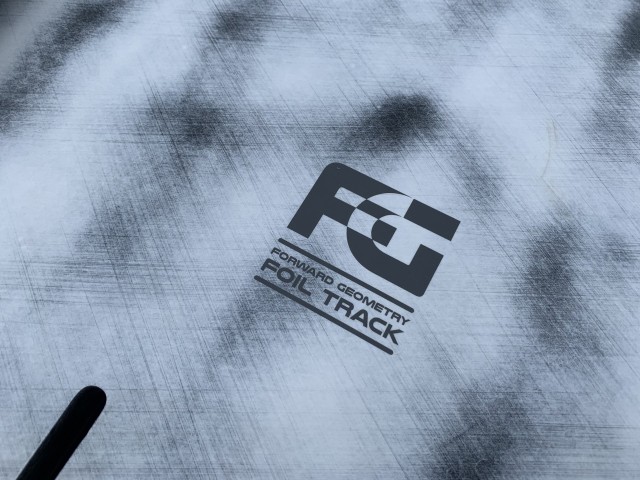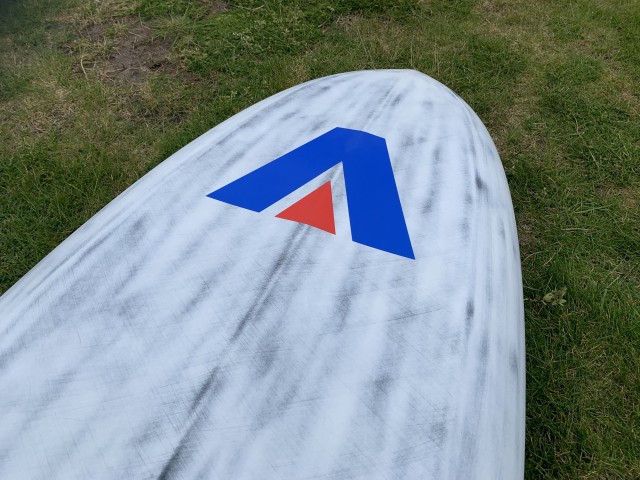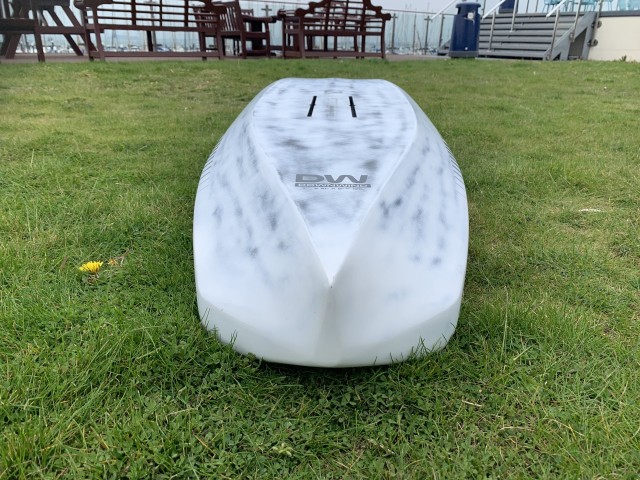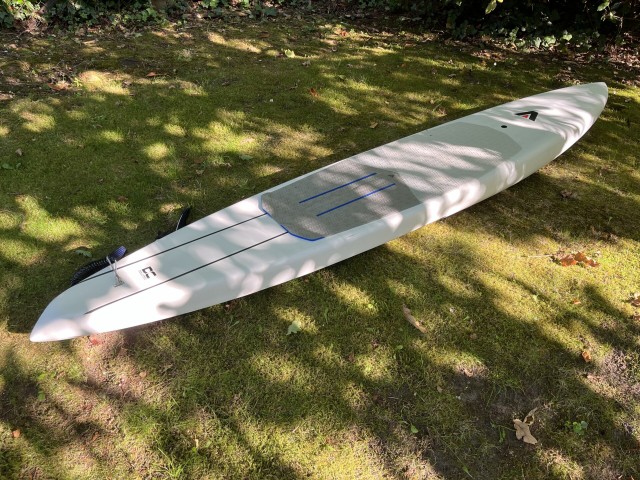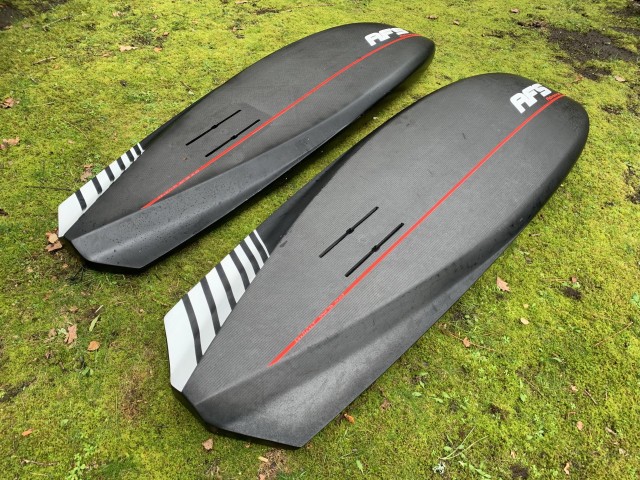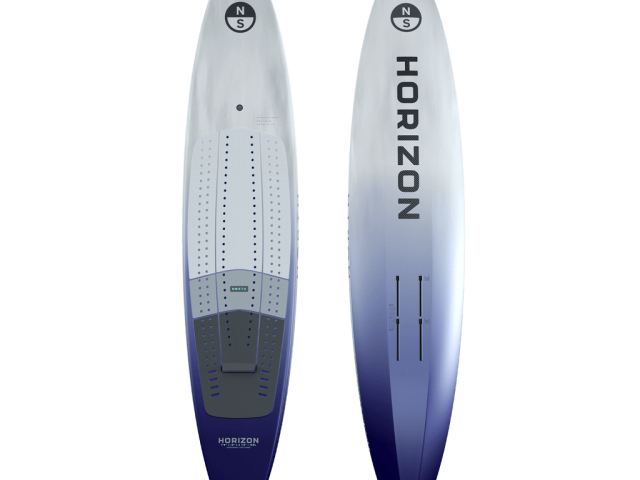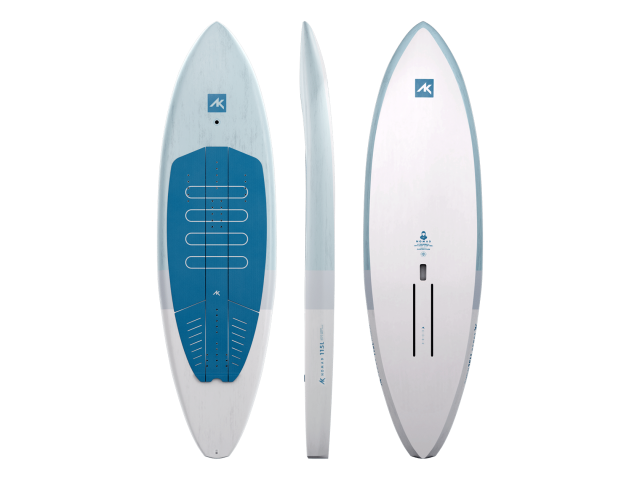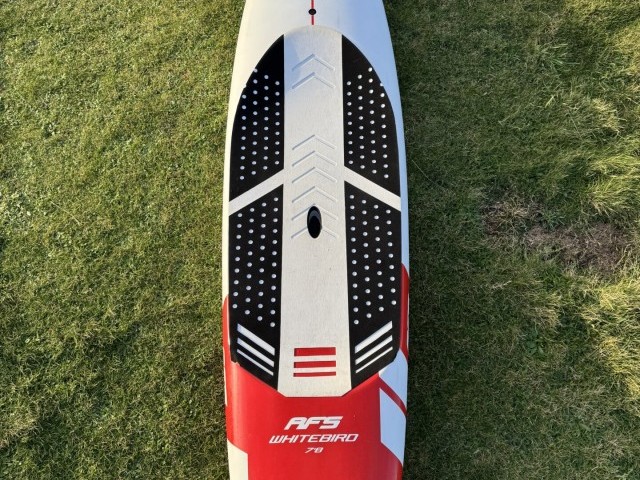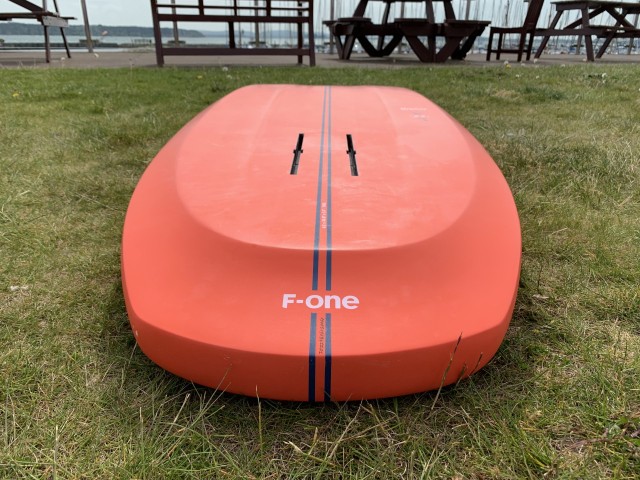At A Glance
After the success I’d recently had from the AFS Blackbird, I was super excited for the Armstrong Downwind SUP to arrive. The Armstrong DW board is designed to provide exceptional performance for downwind SUP foiling, light wind winging, SUP surf foiling, and prone downwinding. The range comprises five sizes, providing plenty of options for a range of rider weights and skill levels. I was sent the 7’7 by 21 inches, 121L. That is probably one or maybe two sizes larger than I would buy personally (I’m just under 70kg) but as I’ll go on to discuss, it wasn’t an issue.
The board features sleek lines, innovative volume distribution, and a state-of-the-art construction that delivers a lightweight and stiff feel. It features proprietary carbon FG tracks and a double carbon sandwich stringer system.
The design of the bottom chines, inspired by Armstrong's Performance mast foil section, is designed to deliver efficient water release and fast acceleration onto bumps. The V nose to subtle double concave up to the foil boxes and the pin tail acts like a fin, are there to reduce drag on touch downs and make it easier to track while paddling. The boards also feature a subtle deck recess for a closer connection to the foil.
The Armstrong DW board range is available in five sizes, ranging from 85L to 135L, ensuring that everyone who wants to sample the DW stoke is covered. Armstrong has designed each to cater to a specific rider weight range, ensuring that you can find the perfect fit for you.
With all that in mind, I couldn’t wait to get the board on the water. Out of the box, there is no doubt that it just oozes style. It’s finished impeccably and feels super light for a board that size. It also comes with a fully padded board bag, something that Armstrong does with all of their boards. I’m a big fan of that as it means that from day one you can keep your board in perfect condition.
On The Water
The day the board arrived I headed straight to the beach, it was forecast to be a light 10knots with a little bit of wind swell rolling in on the sandbars at my local spot. The sort of conditions I would rarely consider heading out in, except maybe for a kite foil… I attached the HA1525, a high-aspect foil that is fast for its size, but does have quite a fast stall speed. I had the original Armstrong 72cm mast, 70 Fuse, & CFv2 300 tail.
As I paddled out, I had that feeling of impending doom as I watched the tiny bumps roll past, I’d chatted to some curious observers on the beach and just knew I’d be making a fool of myself… My first couple of attempts felt close, this could be on! I could immediately feel the acceleration & glide of the board, on around the 5th attempt I was up. Gliding effortlessly on tiny bumps is a crazy feeling, due to the forward geometry of the foil box I genuinely didn’t feel like I was on a massive board. For this reason, and because it’s lightweight, ‘swing weight’ honestly doesn’t feel like a thing, I was able to pump between the bumps with ease.
My next few sessions were in Poole Harbour on a couple of super windy days. One of which is the video linked to this article. When you have 30+ knots on your back, even with just a few kilometres of fetch, the bumps stack up quickly. Especially in the deeper water in the harbour, I had decent-sized steep bumps to paddle into and the 7’7 did it with ease. Those two sessions were the eye-opener for me, I was 100% sure after that that this was the sport for me.
On the second session, I switched up to the Armstrong 795 High-Performance mast. Initially, I wanted the shorter mast to reduce drag in my take-off, but I soon realised that that wasn’t an issue, and actually, I preferred the stiffness with the big board. The extra height and stiffness of the mast gave me extra confidence to turn, pump & link bumps without the feeling that I was going to wobble or lose balance. Which did happen every now and then on the 72cm, especially with such a big foil. That HA1525 by the way, was the perfect size for small harbour bumps, it was ever so slightly quicker than the bumps meaning I could turn or ride across them looking for the next one.
Something I liked about the Armstrong DW board was its ability to pop back up onto foil when I touched down. This is due to that V nose to subtle double concave up to the foil boxes and pin tail I mentioned earlier. If I did touch down, or slow down a little, I’d put a couple of hard paddle strokes in, catch up to the bump and fly again. I actually found it something that was well worth practicing, certainly felt good when I got it right.
The Armstrong DW board also allowed a ‘first’ for me. Yep, I got the flat water SUP start on it! Can you tell I’m pleased about this? Doesn’t matter what gear you’re on in my opinion, it’s a serious workout. But what the 7’7 did for me is give me that extra acceleration I needed to get on foil. Again, once on foil, it’s light enough to get a good 30 seconds of pumping around on it. Such a fun thing to do on flat days while also boosting your fitness.
I did those flat water starts on a big Axis foil, with a very slow stall speed. I did try on the HA1525 as well, I was super close but just didn’t quite have the speed to fully fly. I know it’s doable on that wing, will just take a bit more practice, and fitness!
The length-to-width ratio of these boards is on the longer, narrower side but not on the extreme end of the market. I know I had a large board for my weight, but even at a fairly narrow 21 inches, I felt very stable on it. Something I like about that is the thought of doing big ocean adventures, when you’re a long way offshore you want to know that you have the added stability to get on foil if conditions are difficult. For that reason, I’d most likely buy the 7’2, 107L version if I was to get my own.
Overall
If you’re even slightly interested in downwinding, this board is well worth your consideration. Its lightweight, fast acceleration, and easy take-off make for an incredible bit of kit that will have you grinning from ear to ear. Even if you struggle with learning to SUP downwind, it doubles as a brilliant light wind winging board or you can go with the hand paddles option. As is always the case with Armstrong gear, it’s a high-quality product that is built to last and will maximise your time on the water for years to come.
Videos
This review was in Issue 16 of Tonic Mag.
For more information visit Armstrong FoilsRelated
By Jack Galloway


